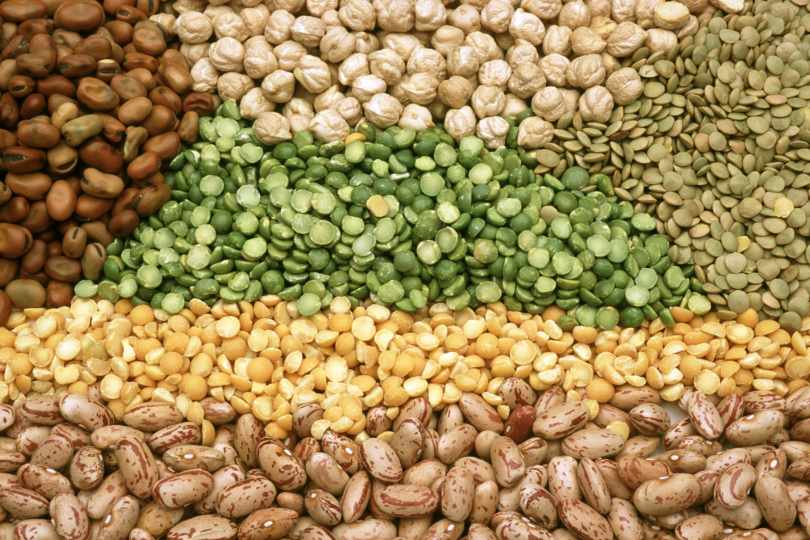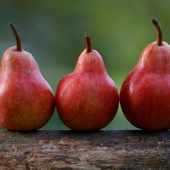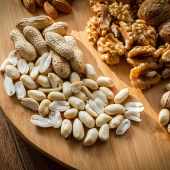Are you looking for the best fiber rich foods? Are you running short in choosing the fiber-rich vegetables and fruits to add to your diet plan? Well, then you are indeed reading the right space! This blog will give you some great veggies, fruits, legumes, seeds, and more ideas to include in your diet. Moreover, all these are readily available in grocery stores, providing you with the right nutrients. So, scroll down to know all the fiber rich foods!
Table of Contents
Fiber Rich Foods
You need to consume foods high fiber vegetables and fruits to keep your gut in good health, initiate weight loss, and keep your heart healthy.
By the Dietary Guidelines for Americans, you must adequately consume 33.6 grams of fiber for men and 28 grams for women in a day.
Sadly, Americans are unable to meet the goal of daily intake. Only 5% of the total people in the United States consume an adequate amount of fiber. Otherwise, most people consume only 17 grams of fiber.
Your body needs both insoluble and soluble fibers to keep your body in good health. So, it would be best to supply yourself with a lot of legumes, veggies, whole grains, and fruits. And here are going to focus on each of the categories specifically. Hang in there, and you’ll know it all below!
Fiber Rich Legumes
You will find legumes to be rich in fiber and are plant-based. Some of the legumes are peas, lentils, and beans.
When you eat beans, you are supplying yourself with fermentable fibers. All the fibers get into your large intestine and feed the good bacteria in your gut.
Some research shows that having a healthy gut can lower the rate of type 2 diabetes and obesity.
Here is the list of legumes that are rich in fiber:
Navy beans
If you’re looking for one of the best fiber sources through legumes, then navy beans can top the list. Alongside supplying you with a fair amount of fiber, you will also get an adequate protein amount. Try adding them to your stews, salads, and curries to give yourself the fiber and protein supply. You can get 10.5 grams of fiber with 100 grams of cooked navy beans.
Pinto Beans
A trendy staple in the United States is the pinto beans. Some people can consume them refried or whole or mashed too. Apart from supplying yourself with a fair amount of fiber, you can also get loads of iron and calcium from pinto beans. A cup of almost 100 grams of pinto beans can give you 9 grams of fiber.
Black beans
You will find black beans to be a good source of plant-based protein. It also contains vast amounts of magnesium and iron. So, if you follow a vegan diet, try consuming a meal of rice and black beans. By doing that, you will easily supply yourself with all the nine essential amino acids your body requires. With 100 grams of black beans, you are getting 8.7 grams of fiber.
Lentils
You can try out the different types of lentils to supply yourself with the correct amount of fiber. Some of the lentils you can try out are the French lentils or the red lentils. With about 100 grams of lentils, you are getting 7.9 grams of fiber.
Mung beans
You can try substituting your flour consumption with bean flour instead. You will get a supply of magnesium, potassium, and vitamin B6 too. Are you wondering how much fiber you get from bean flour? Well, with 100 grams of bean flour, you are getting 7.6 grams of fiber.
Fiber rich vegetables
Veggies are always the best inclusion of a well-balanced diet. They are significant supply amounts of nutrients and provide your body with a lot of fiber. The list below will tell you some fiber-rich vegetables to add to your diet today. Here are the following:
Artichokes
Artichokes are a great inclusion to get a supply of not only fiber but also calcium, folate, vitamins K and C. You can either steam, grill or bake the artichokes to get its original flavor and taste. You might notice a few people prepare the artichoke heart only, rather than its leaves. By having one medium-sized artichoke, you can supply yourself with 6.9 grams of fiber content, which meets 20.5% of the adequate intake.
Potatoes
It is true that potatoes are starchy and can make you gain weight if consumed in high amounts. But it also counts among the fiber-rich foods and can provide you with magnesium, vitamin C, and vitamin B. By eating one big-sized potato that is baked with the peel can give you 6.3 grams of fiber. And this meets almost 18.8 % of the adequate daily intake.
Sweet potatoes
Sweet potatoes prove to be extremely good for your health overall. Although they are a starchy vegetable, they can supply you with a fair amount of vitamin A and other nutrients. When you bake one large sweet potato with the peel on it, you are getting about 5.9 grams of fiber content.
Parsnips
One of the high-fiber vegetables is parsnips. It contains adequate amounts of zinc, vitamin B, K, C, and calcium too. When you boil a parsnip and consume it, you are getting 5.8 grams of fiber.
Winter squash
Winter squashes are food with high fiber content. You also get an adequate supply of vitamin C and vitamin A when you eat winter squashes. With a chopped winter squash cup, you are getting 5.7 grams of fiber, which about 17% of the adequate daily intake.
Broccoli
The cruciferous veggie- broccoli must make it to the high-fiber foods chart. It is high in vitamin A and vitamin C. Also, you can get a fair amount of polyphenol antioxidants that are beneficial for your health overall. By consuming one cup of steamed broccoli florets, you are supplying yourself with 5.1 grams of fiber. That can meet 15.2 % of the adequate daily intake of fiber.
Pumpkin
With Halloween making the rounds, pumpkins are readily available in the United States. It is quite a versatile veggie that can make its way into pies, muffins, soups, salads, curries, and more. Besides giving you 3.6 grams of fiber from one portion of pumpkin canned, you are also getting enough calcium, vitamin K, and vitamin A.
Fiber rich Fruits
Fruits are always a very healthy and essential inclusion to make a balanced diet. You can munch on them in between meals to provide yourself with fiber and other nutrients. Some of the fiber-rich fruits are below:
Avocados
Do you love guacamole? Well, then there is good news for you. Apart from supply huge amounts of fiber, you’re also getting monosaturated fats that can keep your heart healthy. You can chop avocadoes, add them to your salads, or even make dips for your favorite nachos! With a cup of avocado chopped and peeled, you get 9.2 grams of fiber, which meets almost 27.4 % of the adequate daily intake.
Pears
If you are looking for all the fiber rich foods, then pears must make it to your diet chart. It provides you with adequate amounts of calcium, vitamin A, folate, and vitamin C. You can add them to your salads or have them raw. By eating one medium-sized pear, you get 5.5 grams of fiber that meets 16.4 % of the adequate daily intake of fiber.
Apples
An apple a day keeps the doctor away! An ancient and famous saying is right, by all means. Not only do apples provide you with fiber but also with vast amounts of folate, vitamins, and more. But to get the complete nutrients of apples, you need to consume them with the peel. One large apple contains about 5.4 grams of fiber, which meets the daily intake of 16.1 %.
Raspberries
There is hardly anyone who doesn’t like the taste of raspberries. A great source of vitamin K and C with a loaded number of antioxidants, raspberries are a complete package. Only by consuming half a cup of raspberries you can provide yourself with 4 grams of fiber. That meets 11.9 % of the adequate daily intake of fiber. So, how can raspberries not make it to the list of fiber rich foods?
Blackberries
Just like you can vouch on raspberries to get fiber and other nutrients, blackberries are the same too. With half cup of blackberries, your body is getting 3.8 grams of fiber. Plus, vast amounts of vitamin K, C, and some healthy antioxidants.
Prunes
Do you know what prunes are? Well, they are dried plums that can keep your digestive system healthy. They are very high in fiber, so you must consume them in moderate amounts to reap its maximum benefits. By consuming only five prunes your body is getting 3.4 grams of fiber content that meets almost 10.1% of the adequate daily fiber intake.
Oranges
Not only are oranges good to keep your gut healthy, but also skin, hair, and other organs. A massive supply of vitamin C is present in oranges, so you must have them whenever available. With one orange, you are getting around 3.4 grams of fiber that meets about 10.1% of the daily fiber intake.
Bananas
Bananas are a go-to if you are looking for fruits that give you an adequate supply of nutrients. You will get vitamin C, magnesium, and potassium when you consume one medium-sized banana. Consuming them is pretty much an easy task, but you can always twist your taste-buds by consuming them with baking items. With one medium-sized banana, you can get around 3.1 grams of fiber daily. All of which meet almost 9.2% of the daily fiber intake.
Guavas
Guavas are rich in vitamins A and C and are also a tropical fruit that can provide you with a fair amount of fiber. You can add them to your juices, smoothies, fruit salads, pies, muffins, jams, and more. Also, they can be a great snack if you are thinking of losing weight. One guava has 3 grams of fiber content, which can meet 8.9% of the adequate daily intake.
High-fiber seeds
Seeds are essential for your health overall. They provide you with proteins, healthy fats, and essential omega-3 fatty acids. A source that contains high in fiber content is:
Buckwheat
Do you think buckwheat is a grain? Well, no! The name might suggest that, but it is a seed. Buckwheat is taken from plants, which are grain-like seeds. And the best thing about buckwheat is, it is gluten-free. You will find many people to make soba noodles using buckwheat. Apart from supplying you with a good fiber source, they can also give adequate amounts of zinc and magnesium.
By consuming only half a cup of buckwheat, you get 8.4 grams of fiber, which meets 25% of the adequate daily fiber intake.
High Fiber Whole grains
You can consume whole grains to keep yourself full and also keep your heart in good health. Some high fiber whole grains are:
Freekeh
You can get freekeh by roasting the green wheat. You can add them as a side dish to your meat or mix them with your salads and more. It has a nutty flavor that makes your salads even tastier. By consuming 100 grams of freekeh, you will get 13.3 grams of fiber.
Bulgur wheat
Bulgur wheat is a very old ingredient that was used in pilafs and tabbouleh. You can use them in place of rice while making a warm salad. But it would help if you kept in mind that they are not gluten-free. When you consume 100 grams of bulgur wheat, your body is getting 4.5 grams of fiber, which meets 13.4% of the adequate daily fiber intake.
Final Thoughts
You know how important it is to include fiber into your diet, but you might run short of ideas when filling your shopping cart. So, this list above will help you provide the right amounts of nutrients to keep you in good health.
Consuming fiber rich foods is essential to keep your heart, gut, and overall body healthy. But remember to eat them in the right amount to avoid any kind of adverse side effects.


